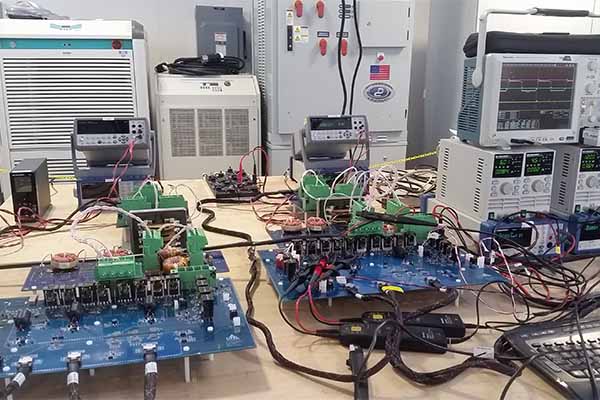
In October 2018, DOE awards USU, WAVE, Cummins, Schneider, the Port of Los Angeles and TTSI $8.4 million to develop and deploy 500 kW wireless charger for EV drayage trucks at the Port of Los Angeles. The purpose of the WXFC-Truck project is to significantly accelerate electrification of heavy-duty trucks, starting with shipping ports and expanding to regional delivery operations across the US.
The Utah State University focuses on the analysis, design and development of the direct medium voltage (MV) grid-tied ac-dc converter in the WXFC-Trucks project. As shown in Fig. 1, the ac-dc converter directly connects to the MV ac grid at its input side and provide a regulated dc output voltage to the inverter of the wireless charger. The proposed modular design approach for the ac-dc converter allows it to work with higher medium voltage grid connection with minimal design modification. The group at Utah State University also work closely with Schneider Electronic on the system level design, UL requirements, thermal management, system mechanical layout, test plans, industrialization and marketing. Charged Article


